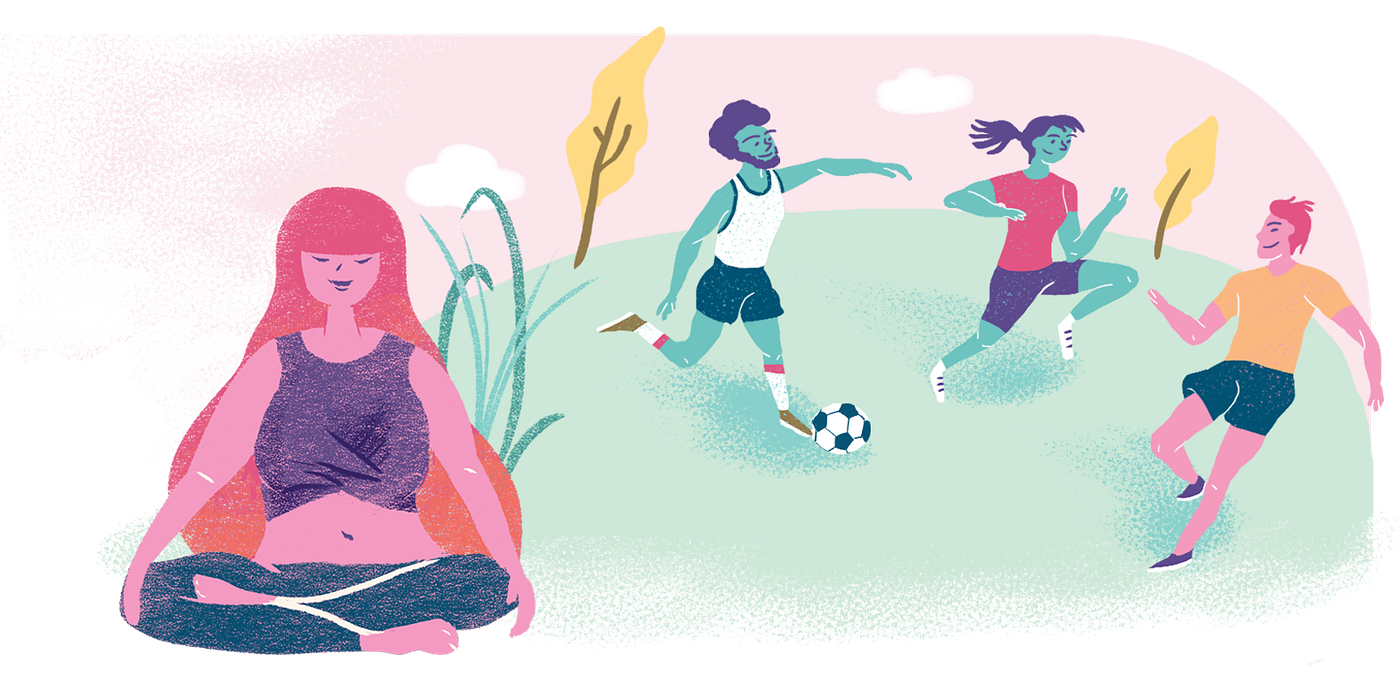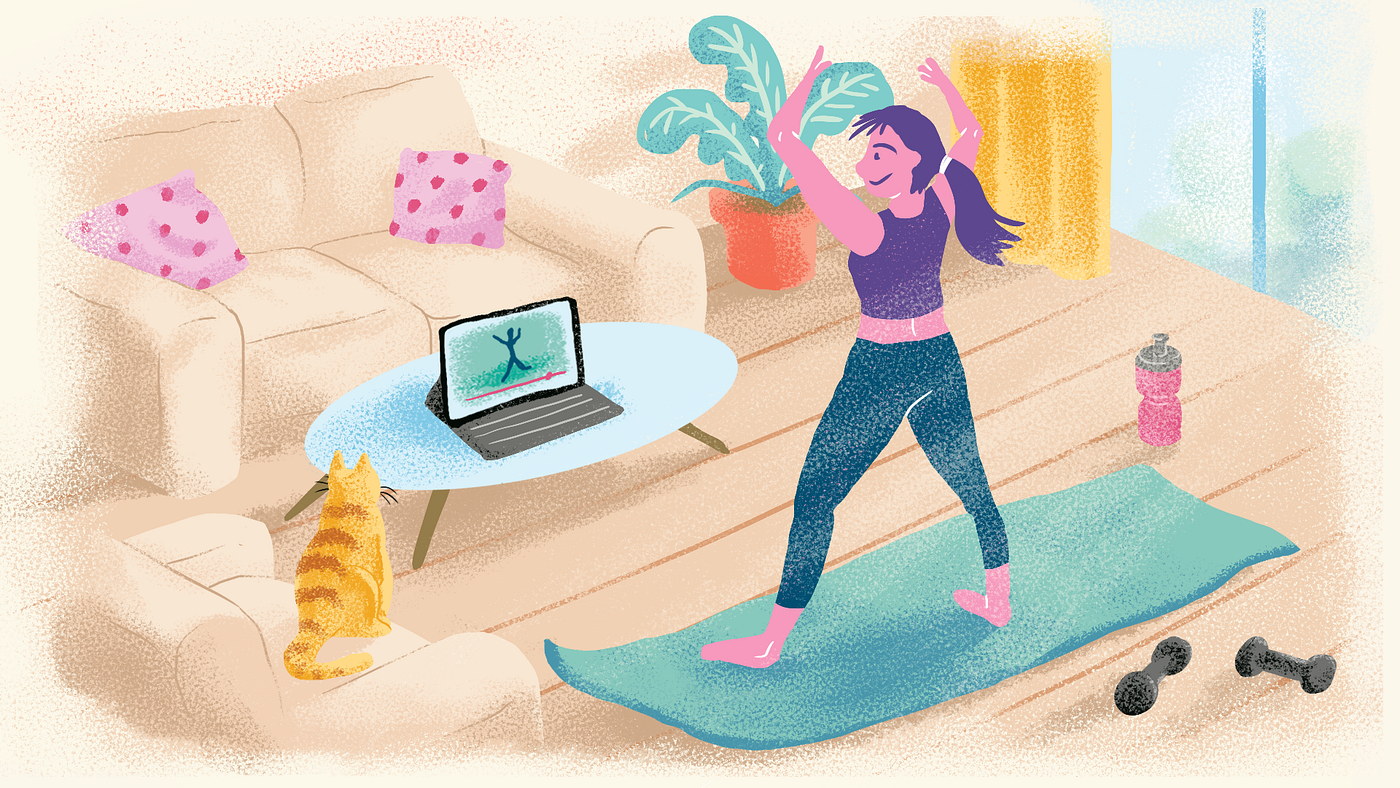6 Tips To Get More Movement Medicine Into Your Life
By PainFix co-founder Yen Tse Yap
Published March 04, 2021
There’s a disconnect between what we know is good for our bodies – exercise, and what our bodies actually want to do. That’s why most gym memberships never get used, and why most of us will choose cake over exercise.
In America, only 23% of adults meet federal recommended guidelines for aerobic and strength-training activity, and this proportion hasn’t changed much for decades.
So the key question is how do we overcome the strong inherent bias our bodies have for conserving energy and minimizing movement. Knowing that exercise is healthy is obviously not enough. Simply exhorting people to move more by listing the factual benefits does little to move the emotional and lazy elephant in our brains.
Here we suggest 6 tips incorporating lessons from behavioral psychology to improve the odds that we’ll make physical activity a bigger part of our lives.
It’s clear that the things we enjoy doing depends strongly on our personality types. So why shouldn’t this extend to the kind of physical activities we enjoy. For instance, extroverts are said to draw energy from other people, so working out with a friend or participating in team sports can be more interesting than working out alone. Introverts, however, may be more comfortable in smaller groups or with activities that are more internally focused like yoga or martial arts.
A study by the British Psychological Society found that the more logical you are, the more you will prefer a structured gym routine. If you’re more creative, then you might prefer outdoor activities like running or cycling. So don’t just follow the crowd into the latest exercise fad. Instead, know yourself and choose things you’ll enjoy doing.

Doing something small is better than not moving at all. And although the Department of Health and Human Services recommends 150 minutes of moderate aerobic activity or 75 minutes of vigorous aerobic activity per week, in addition to muscle strengthening activities twice a week, don’t let that intimidate you if you haven’t exercised in a while. Even moving actively for 4 minutes daily confers healthful benefits.
Find easy ways to bring more movement into your life, such as parking further away from your destination, taking the stairs or walking up escalators, cleaning your house more often or do “walking meetings”.
The cumulative effect of sitting for more than 8 hours per day at work for decades of our lives is, needless to say, bad. This makes your work environment one of the most important places you will need to inject some movement into. Since there’s really no amount of exercise that is too short for our betterment, try incorporating mini workouts while you’re at work.
Following the principle of starting small, look for 5 minute desk workouts online. Some of these desk exercises can be done discreetly, like straight leg raises or chair squats. The key is, again, to make them a regular part of your desk life.
63% of gym memberships go unused anyway, and 82% of gym members go less than once a week according to a recent survey. Here is where the Internet has been a game-changer for those of us who don’t have time to go to a gym or prefer to exercise at home.
Today, thousands of quality workouts are available at the touch of a screen. In fact, HIIT (“High Intensity Interval Training”) workouts, arguably one of the most effective workouts you can do, can easily be done from the comfort and privacy of your own home. On YouTube, you can find hundreds of HIIT workouts to suit all fitness levels offered by professional personal trainers from almost any part of the world.

Make working out something you look forward to by tying it to something enjoyable. Listen to your favorite podcast or audiobook, watch a TV show and even read a book or magazine (e-book readers make this easier) if you’re on a treadmill, stationary bike or elliptical. Organize catch ups with friends during walks or explore new trails when you’re running or cycling to add novelty to your routine.
Treats like these boost the endorphins released through physical activity and are key to turning exercise into a regular habit.
We are all beneficiaries (or victims) of humanity’s extraordinary genius for innovation. Steam engines, cars, trains, washing machines, elevators, escalators, smartphones, car-hailing apps – all these technological improvements have raised living standards so much that the average person today lives with more conveniences than Louis XIV, the Sun King of France. The flip side, however, is that we no longer burn as many calories when going about our daily lives.
New gadgets like fitness trackers or smartwatches can nudge us to move more by getting us to complete goals. And if fun is needed to get you moving, consider interactive or augmented reality games where you have to actively gesture or move around (“exergaming”).
This article is for informational purposes only and does not constitute medical advice. The information contained herein is not a substitute for and should never be relied upon for professional medical advice. Always talk to your doctor about the risks and benefits of any treatment.